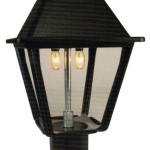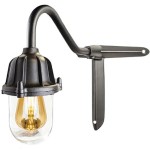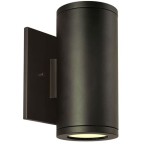Best Way to Paint Outdoor Metal Furniture
Outdoor metal furniture can significantly enhance the aesthetic appeal and functionality of patios, decks, and gardens. However, exposure to the elements can lead to rust, fading, and general wear and tear. Painting metal furniture is an effective way to restore its appearance, protect it from further damage, and extend its lifespan. The success of this process hinges on careful preparation, the selection of appropriate materials, and the application of proper painting techniques. This article provides a comprehensive guide to achieving a professional and durable finish when painting outdoor metal furniture.
Preparing the Metal Surface
Surface preparation is paramount to achieving a long-lasting and visually appealing paint job on metal furniture. Inadequate preparation can lead to paint chipping, peeling, and the recurrence of rust. The following steps outline a detailed process for preparing the metal surface.
Cleaning: The initial step involves thoroughly cleaning the metal furniture to remove any dirt, grease, grime, and loose debris. This can be accomplished using a mixture of warm water and a mild detergent. A scrub brush or sponge should be used to agitate the surface and dislodge stubborn contaminants. For heavily soiled furniture, a pressure washer may be employed, but with caution to avoid damaging the metal or any existing paint that is still adhering well. Ensure the furniture is completely dry before proceeding to the next step.
Rust Removal: Rust is a common problem with outdoor metal furniture and must be addressed meticulously. Small patches of rust can often be removed with a wire brush or sandpaper. For more extensive rust, consider using a power tool equipped with a wire wheel or a rust removal disc. Chemical rust removers are also available and can be particularly effective for intricate designs or hard-to-reach areas. Always follow the manufacturer's instructions when using chemical rust removers, and ensure adequate ventilation. Neutralize any remaining residue from the chemical remover before proceeding.
Sanding: Sanding serves to smooth the surface, remove any remaining imperfections (like old flaking paint), and create a better bond for the primer and paint. Use medium-grit sandpaper (around 120-grit) to lightly scuff the entire surface. This creates a "tooth" for the primer to adhere to. For areas with stubborn paint or rough textures, you may need to use a coarser grit sandpaper initially, followed by medium-grit. After sanding, thoroughly remove all sanding dust with a tack cloth or a damp cloth and allow the furniture to dry completely.
Repairing Damage: Inspect the metal furniture for any dents, cracks, or other structural damage. Minor dents can sometimes be hammered out, while larger imperfections may require the use of metal filler or epoxy. Follow the manufacturer's instructions for applying and curing the filler. Once the filler has cured, sand it smooth to blend seamlessly with the surrounding metal surface. Addressing these issues before painting will ensure a more professional and durable finish.
Selecting the Right Paint and Primer
Choosing the appropriate paint and primer is crucial for achieving a durable and aesthetically pleasing finish on outdoor metal furniture. The type of paint and primer should be selected based on the specific metal being painted (e.g., wrought iron, aluminum, steel) and the environmental conditions to which the furniture will be exposed.
Primer Selection: Primer serves as a bonding agent between the metal surface and the topcoat of paint. It also provides a protective layer against rust and corrosion. For outdoor metal furniture, a rust-inhibiting primer specifically designed for metal is essential. Epoxy primers offer excellent adhesion and corrosion resistance, making them a suitable choice for furniture exposed to harsh weather conditions. Self-etching primers can also be used, as they contain an etchant that bites into the metal surface, further enhancing adhesion. Apply the primer in thin, even coats, following the manufacturer's recommendations for drying time.
Paint Selection: The choice of paint will significantly impact the appearance, durability, and longevity of the finish. Oil-based paints offer excellent durability and resistance to chipping and scratching, but they require longer drying times and can be more difficult to clean up. Acrylic latex paints are more environmentally friendly, easier to clean up, and dry faster. However, they may not be as durable as oil-based paints. Acrylic enamel paints offer a good balance of durability, ease of use, and environmental friendliness. For outdoor metal furniture, select a paint that is specifically formulated for exterior use and provides UV protection to prevent fading. Consider the desired finish (e.g., gloss, semi-gloss, matte) and choose a paint that meets your aesthetic preferences and performance requirements.
Application Methods: Paint can be applied using various methods, including brushes, rollers, and spray guns. Brushes are suitable for small areas and intricate details, while rollers are more efficient for larger, flat surfaces. Spray guns provide the most even and professional-looking finish, but they require more skill and preparation. When using a spray gun, thin the paint according to the manufacturer's instructions and apply multiple thin coats rather than one thick coat to prevent runs and drips. Regardless of the application method, ensure adequate ventilation and wear appropriate personal protective equipment, such as a respirator and gloves.
Color Selection: The color of the paint should complement the surrounding outdoor environment and reflect your personal style. Darker colors tend to absorb more heat, which can make the furniture uncomfortable to use in direct sunlight. Lighter colors reflect heat and can help keep the furniture cooler. Consider the color scheme of your patio, deck, or garden when selecting a paint color. Test a small area with the chosen color before painting the entire piece of furniture to ensure you are satisfied with the result.
Applying the Paint and Finishing Touches
The application of the paint is a critical stage, demanding precision and adherence to best practices to ensure a uniform, durable, and aesthetically pleasing outcome. This phase involves multiple steps, from setting up a suitable painting environment to the meticulous application of paint layers, followed by careful inspection and necessary touch-ups.
Creating a Suitable Painting Environment: Choose a well-ventilated area for painting, preferably outdoors, but avoid direct sunlight or windy conditions. Direct sunlight can cause the paint to dry too quickly, leading to imperfections. Wind can carry dust and debris onto the wet paint surface, compromising the finish. Cover the surrounding area with drop cloths or plastic sheeting to protect it from overspray or spills. Elevate the furniture on blocks or sawhorses to make it easier to access all surfaces and angles.
Applying the Paint: Begin by applying the paint in thin, even coats. Avoid applying too much paint in one coat, as this can lead to runs, drips, and uneven drying. Use smooth, overlapping strokes when using a brush or roller. When using a spray gun, maintain a consistent distance from the surface and move the gun in a steady, back-and-forth motion. Allow each coat to dry completely before applying the next coat, following the manufacturer's recommended drying time. Typically, two to three coats of paint are sufficient to achieve full coverage and a durable finish. Lightly sand between coats with fine-grit sandpaper (220-grit or higher) to smooth out any imperfections and improve adhesion.
Addressing Runs and Drips: Despite careful application, runs and drips can sometimes occur. If you notice a run or drip while the paint is still wet, immediately brush it out or wipe it away with a clean cloth. If the paint has already dried, use fine-grit sandpaper to carefully sand down the imperfection until it is smooth and flush with the surrounding surface. Then, reapply a thin coat of paint to the affected area.
Curing and Protecting the Finish: Allow the paint to fully cure before exposing the furniture to the elements or placing cushions and accessories on it. Curing times can vary depending on the type of paint and the environmental conditions, but typically a minimum of 24 to 48 hours is recommended. Once the paint has cured, consider applying a clear coat of sealant to further protect the finish from scratches, fading, and UV damage. Apply the sealant in thin, even coats, following the manufacturer's instructions.
Maintenance: Regular maintenance is essential for preserving the appearance and longevity of the painted metal furniture. Clean the furniture periodically with mild soap and water to remove dirt and grime. Inspect the finish regularly for any signs of chipping, peeling, or rust. Touch up any damaged areas promptly to prevent further deterioration. Avoid using harsh chemicals or abrasive cleaners, as these can damage the paint. Store the furniture indoors or cover it with protective covers during the off-season to minimize exposure to the elements.

How To Spray Paint Metal Outdoor Furniture Last A Long Time H2obungalow

How To Spray Paint Metal Outdoor Furniture Last A Long Time H2obungalow

How To Paint Metal Patio Furniture So It Looks Like A Million Bucks

Painting Metal Patio Furniture How To The Mom Of Year

How To Paint Metal Patio Furniture With Spray Joyful Derivatives

How To Paint Metal Patio Furniture

The Best Spray Paint For Outdoor Furniture Green With Decor

How To Paint Metal With Rust Oleum Universal

How To Paint Metal Patio Furniture

How To Paint Metal Patio Furniture
Related Posts







